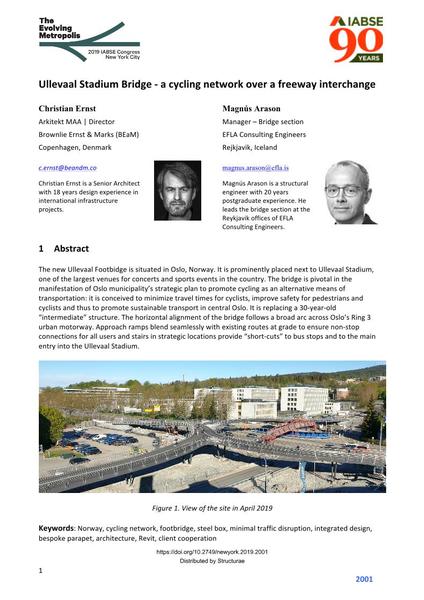Ullevaal Stadium Bridge - a cycling network over a freeway interchange

|
|
|||||||||||
Bibliographic Details
| Author(s): |
Christian Ernst
(Brownlie Ernst & Marks (BEaM))
Magnús Arason (EFLA Consulting Engineers) |
||||
|---|---|---|---|---|---|
| Medium: | conference paper | ||||
| Language(s): | English | ||||
| Conference: | IABSE Congress: The Evolving Metropolis, New York, NY, USA, 4-6 September 2019 | ||||
| Published in: | The Evolving Metropolis | ||||
|
|||||
| Page(s): | 2001-2006 | ||||
| Total no. of pages: | 6 | ||||
| DOI: | 10.2749/newyork.2019.2001 | ||||
| Abstract: |
The new Ullevaal Footbidge is situated in Oslo, Norway. It is prominently placed next to Ullevaal Stadium, one of the largest venues for concerts and sports events in the country. The bridge is pivotal in the manifestation of Oslo municipality’s strategic plan to promote cycling as an alternative means of transportation: it is conceived to minimize travel times for cyclists, improve safety for pedestrians and cyclists and thus to promote sustainable transport in central Oslo. It is replacing a 30-year-old “intermediate” structure. The horizontal alignment of the bridge follows a broad arc across Oslo’s Ring 3 urban motorway. Approach ramps blend seamlessly with existing routes at grade to ensure non-stop connections for all users and stairs in strategic locations provide “short-cuts” to bus stops and to the main entry into the Ullevaal Stadium. |
||||
| Keywords: |
architecture footbridge steel box Norway Revit integrated design cycling network minimal traffic disruption bespoke parapet client cooperation
|
||||
